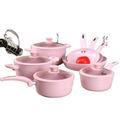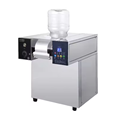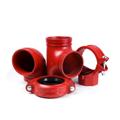Cargo Arrival ≠ Delivery: Understand These Essential Customs Clearance Steps in Australia

Here’s what really happens during the customs clearance process in Australia:
1. Arrival at Port
Once sea freight arrives at an Australian port, the carrier (e.g., shipping line) will notify the consignee or their appointed freight forwarder.
At this stage, the goods are still in port storage and have not yet entered Australian territory officially.
2. Submission of Customs Documents
To initiate the clearance process, the consignee or agent must submit key documents to the Australian Border Force (ABF) and inspection authorities:
-Bill of Lading – Details the cargo and the shipping contract
-Commercial Invoice – Describes the goods and their value
-Packing List – Lists packaging details and item quantities
-Import Declaration – Required for customs to assess taxes and duties
3. Customs Inspection
The ABF will conduct one or both of the following to ensure compliance:
-Document Review – Verifying document accuracy and completeness
-Physical Inspection – May involve X-rays, unpacking, or lab testing, especially for high-risk items
4. Payment of Duties and Taxes
Based on the import declaration, customs will assess and collect:
-Import Duties
-Goods and Services Tax (GST)
-Other applicable fees
All charges must be paid in full before the goods are cleared.
5. Biosecurity Inspection (if applicable)
For goods such as food, plants, or animal products, clearance by the Department of Agriculture, Water and the Environment (DAWE) is required.
This step protects Australia’s ecosystem and public health from invasive species or diseases.
6. Customs Release
Once documents are approved, inspections passed, and payments completed, customs will release the cargo.
The goods are now officially cleared and can be picked up from the port.
7. Pickup and Final Delivery
After clearance, the freight forwarder or logistics provider will handle the final steps:
Pick-up from port storage
Transport to distribution center or delivery hub
Final delivery to consignee's designated address
8. Summary
The Australian sea freight clearance process involves close coordination between customs, freight agents, and quarantine authorities.
For importers, understanding each step and working with a reliable logistics partner means saving time, money, and avoiding costly mistakes.










